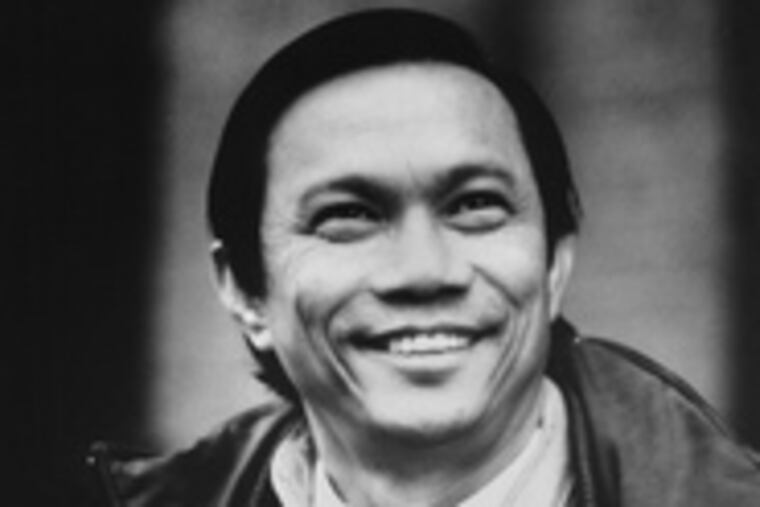Dith Pran; photographer inspired ' Killing Fields'
NEW YORK - Dith Pran, the Cambodian-born journalist whose harrowing tale of enslavement and eventual escape from that country's murderous Khmer Rouge revolutionaries in 1979 became the subject of the award-winning film The Killing Fields, died yesterday. He was 65.

NEW YORK - Dith Pran, the Cambodian-born journalist whose harrowing tale of enslavement and eventual escape from that country's murderous Khmer Rouge revolutionaries in 1979 became the subject of the award-winning film
The Killing Fields,
died yesterday. He was 65.
Dith died at a New Brunswick, N.J., hospital of pancreatic cancer, according to Sydney Schanberg, his former colleague at the New York Times. The cancer had been diagnosed almost three months ago.
Dith was working as an interpreter and assistant for Schanberg in Phnom Penh, the Cambodian capital, when the Vietnam War reached its chaotic end in April 1975 as both countries were taken over by Communist forces.
Schanberg helped Dith's family escape but was forced to leave Dith behind after the capital fell; they were not reunited until Dith escaped four and a half years later.
Eventually, Dith resettled in the United States and went to work as a photographer for the Times.
Dith coined the term "killing fields" for the horrifying clusters of corpses and skeletal remains of victims he encountered on his desperate journey to freedom.
Pol Pot, bent on turning Cambodia into a strictly agrarian society, and his Communist zealots were blamed for the deaths of nearly 2 million of Cambodia's 7 million people.
"That was the phrase he used from the very first day, during our wondrous reunion in the refugee camp," Schanberg said later.
With thousands being executed simply for manifesting signs of intellect or Western influence - even wearing glasses or wristwatches - Dith survived by masquerading as an uneducated peasant, toiling in the fields and subsisting on as little as a mouthful of rice a day and whatever small animals he could catch.
After Dith moved to the U.S., he became a goodwill ambassador for the United Nations High Commissioner for Refugees and founded the Dith Pran Holocaust Awareness Project, dedicated to educating people on the history of the Khmer Rouge regime.
He was "the most patriotic American photographer I've ever met, always talking about how he loves America," said Associated Press photographer Paul Sakuma, who knew Dith through their work with the Asian American Journalists Association.
Schanberg described Dith's ordeal and salvation in a 1980 magazine article titled "The Death and Life of Dith Pran." Schanberg's reporting from Phnom Penh had earned him a Pulitzer Prize in 1976.
Later a book, the magazine article became the basis for
The Killing Fields
, the highly successful 1984 British film starring Sam Waterston as the Times correspondent and Haing S. Ngor, another Cambodian escapee from the Khmer Rouge, as Dith Pran.
The film won three Oscars, including the best-supporting-actor award to Ngor.
"Pran was a true reporter, a fighter for the truth and for his people," Schanberg said. "When cancer struck, he fought for his life again. And he did it with the same Buddhist calm and courage and positive spirit that made my brother so special."